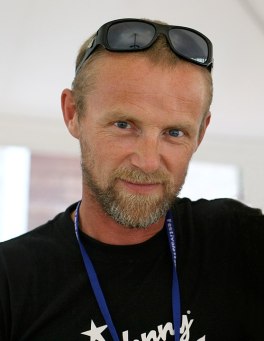
The entertaining film American Fiction is about Black author Thelonious “Monk” Ellison whose highbrow works don’t sell (trailer). As a piece of literary sarcasm, he deploys a pseudonym (Stagg R. Lee) and the persona of a fugitive from justice to pen a novel full of gangsta stuff—shootings, drugs, unknown daddies, you name it. Frustratingly, this pile of clichés, which he regards as trash, is snatched up by a publisher. A big-budget movie deal is in the works.
It seems Americans (book publishers, movie-makers, consumers) are much more willing to accept that depiction of Black life than the reality of an upbringing like Monk’s: a father and two siblings who are doctors, his life as a college instructor.
Racist attitudes about Blacks aren’t the only prejudice explored in the film. The Black family’s prejudice against white people recurs. And, Monk’s brother is a gay plastic surgeon who escaped from Massachusetts to Tucson to put a continent between himself and the homophobic attitudes of his parents.
This may sound a bit heavy, but the script (written by Cord Jefferson) has a light touch and frequent bursts of humor, even when we see our not-best selves. No matter how on-point the humor is, it’s never mean-spirited. Jefferson also directed the film, which stars Jeffrey Wright giving a vulnerable, complex performance as Ellison/Lee, Tracee Ellis Ross as his sister, Sterling K. Brown as brother Clifford, and Leslie Uggams as their widowed mother.
John Ortiz does a perfect job as Ellison’s agent, the only person in on the joke. He’s against the idea at the outset, but when it’s such a runaway financial success, he’s in. Monk is not. He wants to abandon the Stagg R. Lee project, but for various reasons, he’s increasingly stuck. Adam Brody plays the terminally clueless Hollywood producer. He thinks he’s cool with Black people, but . . .
Monk embarks on a predictable romance with public defender Coraline (Erika Alexander). It’s useful to the story, because it hits the nail home for Monk about the downsides of his disengagement with life—ironically, what his fiction suffers from too.
The many closeups of Monk—taking situations in and puzzling over them—give the impression he’s merely an observer of his life , not a participant. In one of many beautiful filmmaking moments, early on, a death occurs that Monk watches through a not-quite-closed hospital door. From down the hall, you see him silhouetted in front of the door, and when he realizes what’s happened, he slowly backs away, distancing himself from another painful reality.
Rotten Tomatoes critics’ rating: 93%; audiences: 98%.












